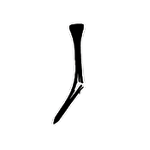Physical Keys to a Great Backswing
In this video, Titleist staff member Jason Baile is joined by Lance Gill, the Performance Director at Jupiter Hill Club. Together, they walk through some important checkpoints and physical screens that you can use to construct a simple, repeatable backswing that will put you in prime position for a powerful and consistent strike through the golf ball. Some keys to keep in mind:
In the first few feet of the takeaway, the club head should stay outside the line of your hands (as seen looking down the target line). Rolling or snatching the clubhead inside the hand line in the takeaway is the biggest cause for the dreaded over-the-top move in the downswing.
After the initial move off the ball, Jason advises getting the club "light" so that you can control it. This is accomplished by hinging the wrists up (radial deviation) and bending the trail wrist back (wrist extension).
As the club moves further back, marry the rotation of your upper body with your arm swing and wrist set. To do this correctly, make sure you can dissociate your upper and lower body, turning your torso around your spine without moving your hips and lower body. The upper body coils while the lower body remains quiet and stable.
Remember Jason's key for proper sequencing – you wind up your swing from the top and unwind it from the bottom.

























